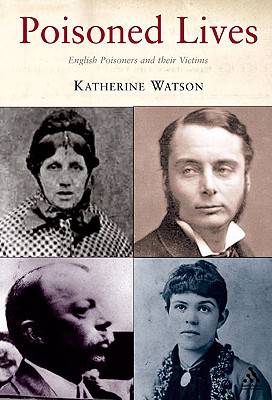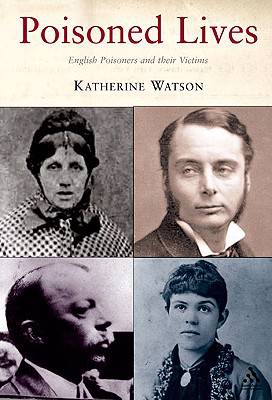
- Afhalen na 1 uur in een winkel met voorraad
- Gratis thuislevering in België vanaf € 30
- Ruim aanbod met 7 miljoen producten
- Afhalen na 1 uur in een winkel met voorraad
- Gratis thuislevering in België vanaf € 30
- Ruim aanbod met 7 miljoen producten
Zoeken
€ 72,95
+ 145 punten
Omschrijving
From Mary Ann Cotton, the Victorian serial murderess, to Dr Crippen, poisoners have attracted a celebrity unmatched by violent killers. Secretly administered, often during a family meal, arsenic (the most commonly-used poison) led to a slow and agonising death, while strychnine (with its characteristic bitter taste) killed very quickly. Poisoned Lives is the first history of the crime to examine poisoning and its consequences as a whole. Unwanted husbands, wives or lovers, illegitimate babies, children killed for the insurance money, relatives, rivals and employers were amongst the many victims of these calculating killers. Difficult to detect before 1800, poison undoubtedly had its heyday in the nineteenth century. In response to many suspected cases, forensic tests were developed that made detection increasingly likely, and the sale of poisons became more tightly controlled. Because of this, twentieth-century poisoning has become a crime largely associated with medical professionals including, most recently, Dr Harold Shipman, the world's most prolific serial killer.
Specificaties
Betrokkenen
- Auteur(s):
- Uitgeverij:
Inhoud
- Aantal bladzijden:
- 272
- Taal:
- Engels
Eigenschappen
- Productcode (EAN):
- 9781852855031
- Verschijningsdatum:
- 23/08/2006
- Uitvoering:
- Paperback
- Formaat:
- Trade paperback (VS)
- Afmetingen:
- 163 mm x 238 mm
- Gewicht:
- 471 g

Alleen bij Standaard Boekhandel
+ 145 punten op je klantenkaart van Standaard Boekhandel
Beoordelingen
We publiceren alleen reviews die voldoen aan de voorwaarden voor reviews. Bekijk onze voorwaarden voor reviews.











